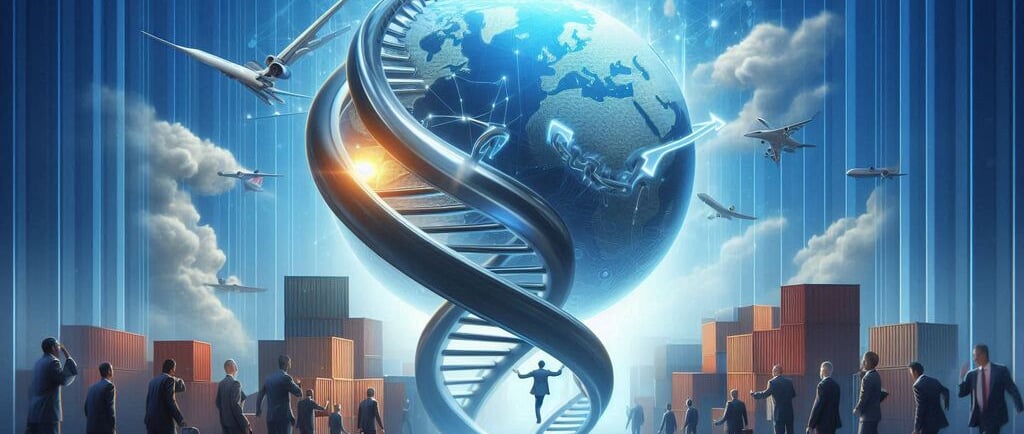Let us collaborate to foster global growth and development together.
Understanding Tariffs: Their Impact on Global Trade
Discover how tariffs impact global trade. Explore their role in shaping economies, international relations, and everyday consumer prices in this insightful guide.
10/31/20242 min read


Discover how tariffs impact global trade. Explore their role in shaping economies, international relations, and everyday consumer prices in this insightful guide.
Understanding Tariffs: Their Impact on Global Trade
Introduction: The Ripple Effects of Tariffs
Have you ever wondered why the price of imported goods fluctuates or why some countries excel in specific exports? The answer often lies in tariffs. These seemingly straightforward taxes on imports or exports have far-reaching effects on economies, businesses, and consumers worldwide. Whether you're a business owner navigating international markets or a curious consumer, understanding tariffs is essential in today’s globalized world.
What Are Tariffs?
Definition and Types
At their core, tariffs are taxes imposed by governments on goods crossing international borders. They serve various purposes, from generating revenue to protecting domestic industries. The main types include:
Ad valorem tariffs: Calculated as a percentage of the product’s value.
Specific tariffs: A fixed fee charged per unit of the product.
Compound tariffs: A combination of ad valorem and specific tariffs.
The Why Behind Tariffs
Governments use tariffs strategically. Common reasons include:
Protecting local industries: Tariffs can make imported goods more expensive, encouraging consumers to buy domestic products.
Revenue generation: For some countries, tariffs are a significant source of income.
Trade negotiation tool: Tariffs can be increased or reduced to influence international relations.
How Tariffs Affect Global Trade
Impacts on Economies
Tariffs influence global trade by shaping supply chains and pricing strategies. While they can support domestic industries by reducing foreign competition, they often come with trade-offs:
Positive effects: Domestic industries grow due to decreased competition.
Negative effects: Higher prices for consumers and potential trade wars.
For instance, during the U.S.-China trade dispute, tariffs led to higher costs for manufacturers, ultimately affecting global markets.
Case Study: The U.S.-China Trade War
From 2018 onwards, the U.S. imposed tariffs on Chinese goods to address trade imbalances. While intended to boost American industries, the tariffs resulted in:
Increased prices for American consumers.
Supply chain disruptions worldwide.
Retaliatory tariffs by China on U.S. exports.
Tariffs and Everyday Consumers
Impact on Prices
Tariffs directly affect the cost of imported goods. For example, when tariffs are imposed on electronics, clothing, or agricultural products, retailers often pass these costs onto consumers.
Example: The Cost of Coffee
Consider a tariff on imported coffee beans. While the intent might be to support local farmers, the result is often pricier cups of coffee for everyday consumers.
Pros and Cons of Tariffs
Advantages
Encourages local production: Businesses and farmers thrive when they face less competition from imports.
Generates government revenue: This revenue can fund public services.
Protects strategic industries: Essential industries, such as defense or agriculture, benefit from reduced dependency on foreign goods.
Disadvantages
Higher consumer costs: Imported goods become pricier.
Strained international relations: Tariffs can lead to retaliatory measures and trade disputes.
Inefficient markets: Domestic industries may become complacent without competition.
Navigating Tariffs in Global Trade
Practical Tips for Businesses
Stay Informed: Monitor tariff changes and trade agreements relevant to your industry.
Diversify Suppliers: Reduce reliance on a single country by sourcing globally.
Leverage Trade Agreements: Take advantage of reduced tariffs through free trade agreements (FTAs).
Resources for Understanding Tariffs
World Trade Organization (WTO): Offers insights into global trade regulations.
U.S. International Trade Commission (USITC): Tracks tariffs and trade statistics.
Conclusion: Tariffs in a Globalized World
Tariffs are more than just taxes; they’re tools that shape economies and global relations. While they offer benefits like protecting local industries, their downsides, such as higher consumer costs, cannot be ignored. As globalization continues to evolve, understanding tariffs and their impacts is critical for anyone engaged in trade or curious about the global market.
What are your thoughts on tariffs? Leave a comment below or check out our related articles for more insights into global trade and economics.
Innovation
Cutting-edge solutions for industrial efficiency and productivity.
© 2024. All rights reserved.


